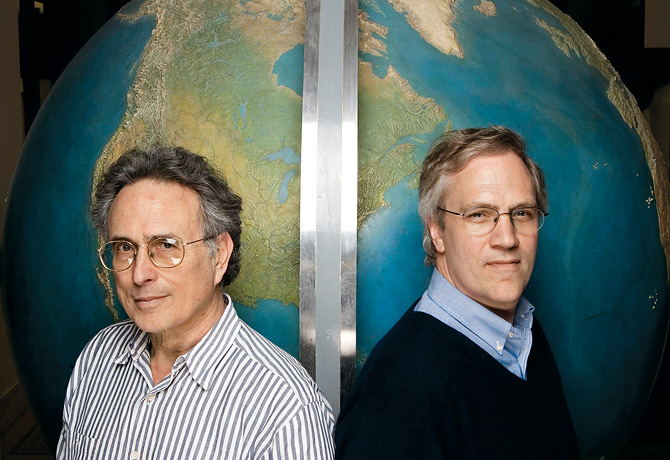
Physicist Robert Socolow, left, and ecologist Stephen Pacala, right, Co-Directors of The Carbon Mitigation Initiative at Princeton University.
STRATEGISTS While the solution to global warming seems dauntingly complex, physicist Robert Socolow and ecologist Stephen Pacala have come up with a remarkably straightforward way of approaching it. To stabilize the world's carbon emissions, they propose not chasing a single magic bullet but harnessing seven different categories of reduction, using available technology. Their goal is to draw a road map for reducing CO2 emissions that is both realistic and effective.
Each of the strategies they have identified could prevent a total of 25 billion tons of emissions by 2056. (We're now adding 7 billion tons annually, and that figure would double by 2056 without some action.) They are all so-called stabilization wedges, which lower the angle of the line representing carbon-emissions growth and together would reduce CO2 emissions enough to stabilize the carbon concentration in the atmosphere. Efforts to reduce energy use form one kind of wedge. So does improving power plants. Another wedge addresses alternative energy, and so on.
As codirectors of the Carbon Mitigation Initiative at Princeton University, Socolow and Pacala oversee research exploring the potential of wind, solar, hydrogen, geothermal and, yes, even nuclear power that should contribute to several of the wedges.
The stabilization wedge may prove to be a useful way of thinking about other vectors where science and policy intersect. The concept has earned Socolow a seat on a National Academy of Engineering panel that will try to figure out the greatest engineering challenges of the next 100 years.